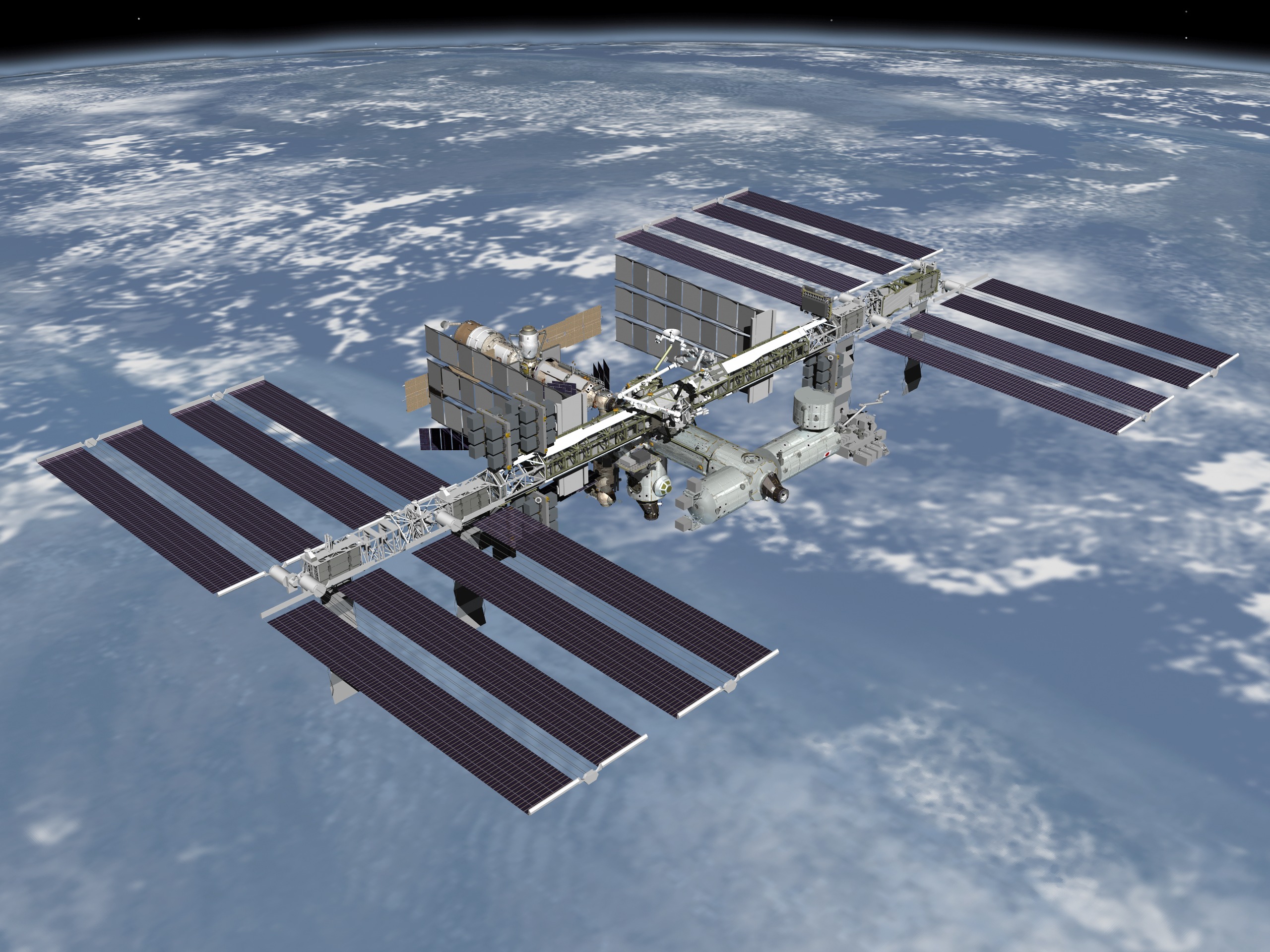
Good morning! To start the work week,* I’m moving up my weekly space news report to Monday. I begin with NASA Begins Series of Spacewalks to Fix Coolant Pump on ISS.
Expedition 38 astronauts Rick Mastracchio and Mike Hopkins ventured outside the space station on Dec. 21, for the first in a series of spacewalks to remove and replace a faulty coolant pump module. The pump is associated with one of the station's two external cooling loops, which circulate ammonia outside the station to keep both internal and external equipment cool.Follow over the jump for more from NASA, including a retrospective of this year’s events, plus bonus reports from campuses on the campaign trail about IceCube.
The previously planned mission of Orbital Sciences' Cygnus spacecraft has been moved to no earlier than mid-January. The postponement will allow ample time for the station crew to focus on repairing the pump module, which stopped working properly on Dec. 11.
2013 What Happened This Year @NASA
In 2013, NASA helped transform access to low Earth orbit ... even as one of our venerable spacecraft reached the boundaries of the solar system ... and we moved ahead on technologies -- that will help us carry out an ambitious asteroid mission we announced ... and, eventually, move on to Mars.Yes, it’s been an amazing year.
Here's a quick trip back through 2013 for those and some of the other big things that happened This Year at NASA.
JPL/NASA has another historical retrospective in The Deep Space Network: 50 years of Interplanetary WiFi.
On Christmas Eve, Dec. 24, 2013, NASA's Deep Space Network, the world's largest and most powerful communications system for spacecraft, turns 50.Science at NASA continues its regular programming with ScienceCasts: Electric-Blue Clouds Appear Over Antarctica.
A vast bank of electric-blue clouds has appeared over Antarctica, signaling the start of the season for southern hemisphere noctilucent clouds.Finally, here is the bonus coverage of IceCube. First, Georgia Tech gives us Observatory Catches Neutrinos in a South Pole Block of Ice.
Scientists like Ignacio Taboada, an assistant professor in the Georgia Tech School of Physics, are using a one cubic kilometer block of ice at the South Pole to help unravel one of the great scientific mysteries of our time.My favorite Rambling Wrecks also put out Observatory Catches Neutrinos in a South Pole Block of Ice to accompany the video.
Scientists are using a one cubic kilometer block of ice at the South Pole to help unravel one of the great scientific mysteries of our time.I have another report on IceCube from Overnight News Digest: Science Saturday (Jade Rabbit lands on Moon) that I forgot to include in China lands “Goddess and Rabbit” on Moon and other space news. Here it is.
Posted December 17, 2013 | Atlanta, GA
The block is part of IceCube, an observatory built in one of the most inhospitable parts of the world to study neutrinos zipping through the Earth from outer space. These subatomic particles normally pass through the Earth as easily as light passes through a pane of glass.But a few of them crash into the ultra-clear ice of IceCube. When they do, they produce secondary particles that can create a faint bluish light called Cherenkov radiation.
Scientists like Ignacio Taboada, an assistant professor in the Georgia Tech School of Physics, are using information from that glow to learn more about these neutrinos – including, perhaps, where in the universe they came from. Using data collected between May 2010 and May 2012, IceCube has measured 28 neutrinos that likely originated outside our solar system, the first time such very-high-energy cosmic neutrinos have been observed.
As the IceCube Neutrino Observatory celebrates the third anniversary of the end of construction on Dec. 18th, it is receiving the “Breakthrough of the Year” award from the British journal Physics World for observing these cosmic visitors.
University of Alabama: IceCube Collaboration, Involving UA Scientists, Awarded Breakthrough of the Year
Dec 13, 2013
MADISON, Wisc. — The IceCube project has been awarded the 2013 Breakthrough of the Year by the British magazine Physics World. The Antarctic observatory, a massive, collaborative effort including University of Alabama researchers, was selected for making the first observation of cosmic neutrinos but also for overcoming the many challenges of creating and operating a colossal detector deep under the ice at the South Pole.The University of Wisconsin has a similar story: IceCube named 2013 Breakthrough of the Year for neutrino discovery. Yes, IceCube was a large collaborative project, the kind that I hope our country can continue to fund, despite what The Archdruid predicts.
“The ability to detect cosmic neutrinos is a remarkable achievement that gives astronomers a completely new way of studying the cosmos,” said Hamish Johnston, editor of physicsworld.com. “The judges of the 2013 award were also impressed with the IceCube collaboration’s ability to build and operate a huge and extremely sensitive detector in the most remote and inhospitable place on Earth.”
The IceCube Neutrino Observatory was completed in December 2010, after seven years of construction at the South Pole. But the idea of a huge detector buried in the ice was conceived a long time ago. Back in the 1990s, the AMANDA detector was built as a proof of concept for IceCube. By January 2005, the first sensors of IceCube had already reached 2,450 meters below the Antarctic ice sheet. It was only a few weeks ago that the IceCube Collaboration published in Science the first evidence for a very high-energy astrophysical neutrino flux, opening a new era in astronomy.
*For many of you. For me, I’m off from work until between the 2nd and the 6th of January. Vacation time!
No comments:
Post a Comment